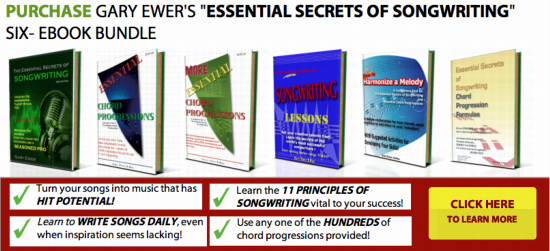How you know your song’s structure is working: you don’t notice it.
_____________
Download “The Essential Secrets of Songwriting” 6-eBook Bundle, and learn the 11 principles crucial to any songwriter’s success.
_____________
 Ask anyone who knows even the tiniest bit about what song structure is, and they’ll probably tell you that it relates to the choices you make regarding a song’s basic form: whether or not you have an intro, verse, chorus, bridge, etc. It also relates to what order you choose to place those elements. For example, it’s a structural decision to choose to start your song with the chorus instead of an intro. Every choice you make regarding these kinds of nuts and bolts are structural decisions. But structure goes even deeper than that, pulling practically every aspect of a song together in an important web of responsibility for the song’s success.
Ask anyone who knows even the tiniest bit about what song structure is, and they’ll probably tell you that it relates to the choices you make regarding a song’s basic form: whether or not you have an intro, verse, chorus, bridge, etc. It also relates to what order you choose to place those elements. For example, it’s a structural decision to choose to start your song with the chorus instead of an intro. Every choice you make regarding these kinds of nuts and bolts are structural decisions. But structure goes even deeper than that, pulling practically every aspect of a song together in an important web of responsibility for the song’s success.
And it’s a tricky subject. Bad structure doesn’t usually mean that you chose to write 3 verses instead of 4, or that you used a guitar solo after verse 2. Those kinds of decisions don’t usually compromise the quality of your music.
But it does weaken your song if your song if energy dies during the chorus, when we know that choruses should build energy. It weakens your song if you put verse-like lyrics in your bridge. Your song’s structure can be weakened in very subtle ways, which means that your song can possibly fail without it being obvious why it’s failing.
Because practically every element of a song has a responsibility for strengthening your song’s formal structure, bad form actually ends up being one of the most common errors made by developing songwriters.
Here’s a short list of things you can check against your latest songs. How many of these errors are you making?
- Chorus melodies need to build energy, usually by being higher than verses in pitch range. If you find song energy dies a bit during the chorus, solve the problem by a) rewriting your chorus to be higher; b) increasing the number of instruments you’re using in the chorus; and c) have instruments play higher in pitch and with more rhythmic energy.
- Make verse lyrics describe people and situations, and allow chorus lyrics to make emotional commentary. If you use your verse to emote too much, your song turns into a 4-minute-long complain-a-thon.
- Verses and bridges can be more adventurous with melody, harmony and rhythm, but once you get to the chorus you need to allow everything to simplify. The chorus should use shorter, stronger chord progressions that focus on the tonic chord, with a simpler melody that has a memorable hook.
- Use a pre-chorus if your verse melody is very simple and short, and/or if the end of the verse melody is far away (in scale steps) from the start of the chorus.
- Don’t allow your song intro to go on too long. If it’s an interesting intro, with important duties for establishing mood and significant motifs, a long intro may be warranted. But most song intros for 4-5 minute pop songs should be 10 – 20 seconds in length.
That’s just a short list. It’s a reminder that nothing happens in isolation in a good song. Everything affects something else, and they almost all relate back to a song’s basic formal structure.
_______________
Follow Gary on Twitter











Pingback: Songwriting – Phrase Structure – Articles | I Write The Music
Hi Gary, great post today, very thought-provoking. I sometimes struggle when trying to locate a suitable spot for instrumental ‘interludes’ in my songs. I hear in other folks’ songs that they can provide relief from relentless vocal sections, allow another instrument or rhythm to feature, generally allow a song to breathe. But as I mainly play solo I find that inserting, say, an instrumental verse after the first chorus can sound forced or superfluous. Can you advise on how to make an instrumental break “earn it’s place” in a song structure?
On average, most solo sections in songs comes after the second chorus, and act as a kind of “wordless commentary”, if you will, to what’s happened in the song already. If you’re doing a set of songs (an album, say), and every song has a solo after the second chorus, it can sound a bit overdone and trite. So other options you might want to consider would be: 1) start the song with an intro that features a solo; and/or 2) let a solo play a significant role in the song’s coda or outro. Keep in mind that inserting short instrumental interludes between verses works well, as long as it’s not too long. A good model for this sort of thing is Santana’s “Smooth”, which uses guitar solo effectively both in the intro and during/between verses, with a longer solo as a middle-8 after the second chorus and throughout the fade.
-Gary